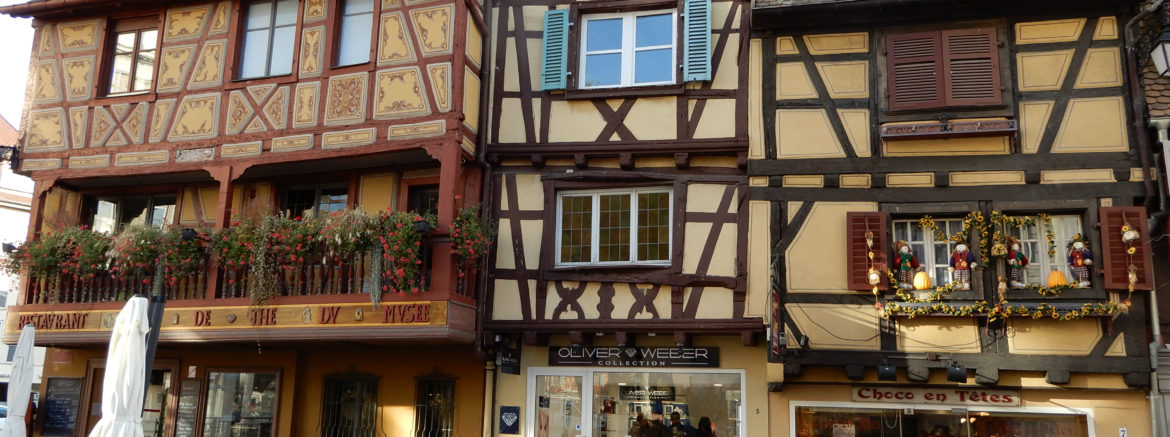It’s about 30 minutes by motor coach from the Viking dock in Breisach Germany to medieval Colmar. The countryside in November is lush and green. The highways carry much less traffic than what we experience in the US. We also note there are few intersections controlled by traffic lights, instead traffic roundabouts keep everyone moving in the right direction without the need to stop.
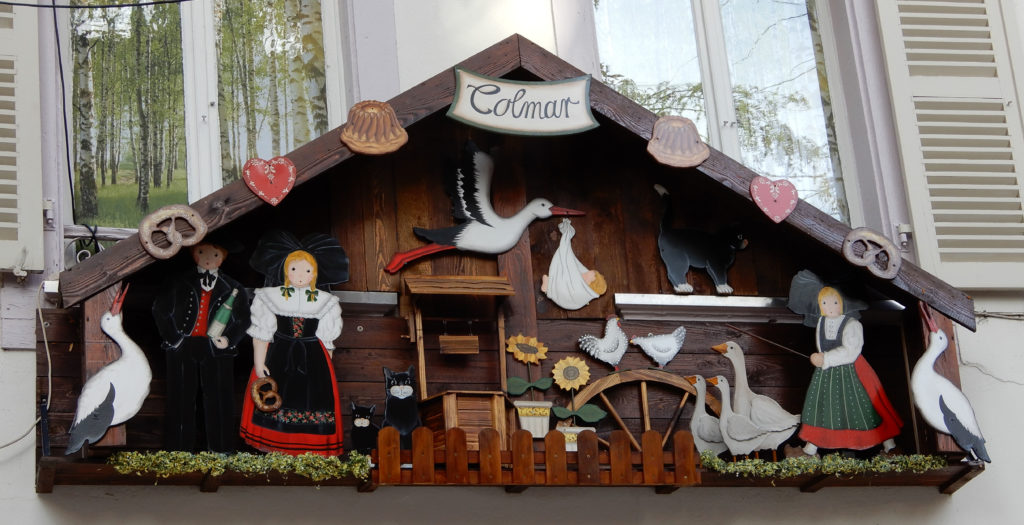
Our guide explains that Colmar is located in the Alsace region of France known for its Riesling and Gewürztraminer wine making dating back centuries. Colmar is on the Alsatian Wine Route and considers itself the capital of Alsatian wine. The well-preserved old town has a number of notable architectural landmarks and museums.
Statue of Liberty
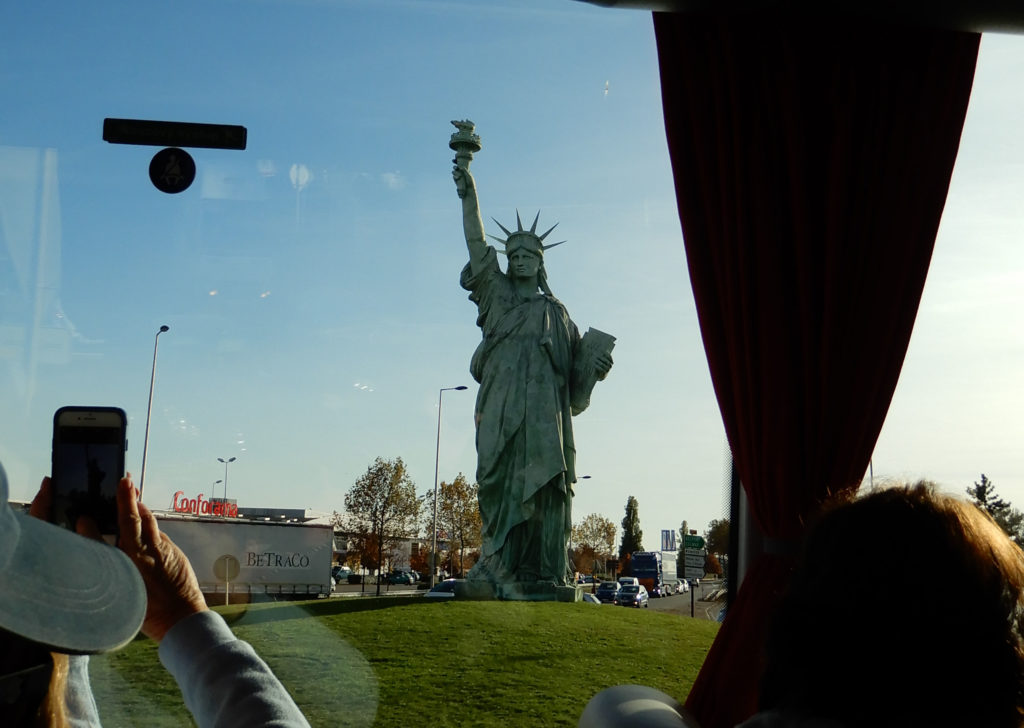
As we approach Colmar, we see a 12-meter high replica of the Statue of Liberty in the center of a traffic circle. The sculpture commemorates the 100th anniversary of the death of native son, sculptor Auguste Bartholdi. Bartholdi designed the Statue of Liberty that was a gift from the people of France to the people of the United States in the late 1800’s.
Transported Back in Time
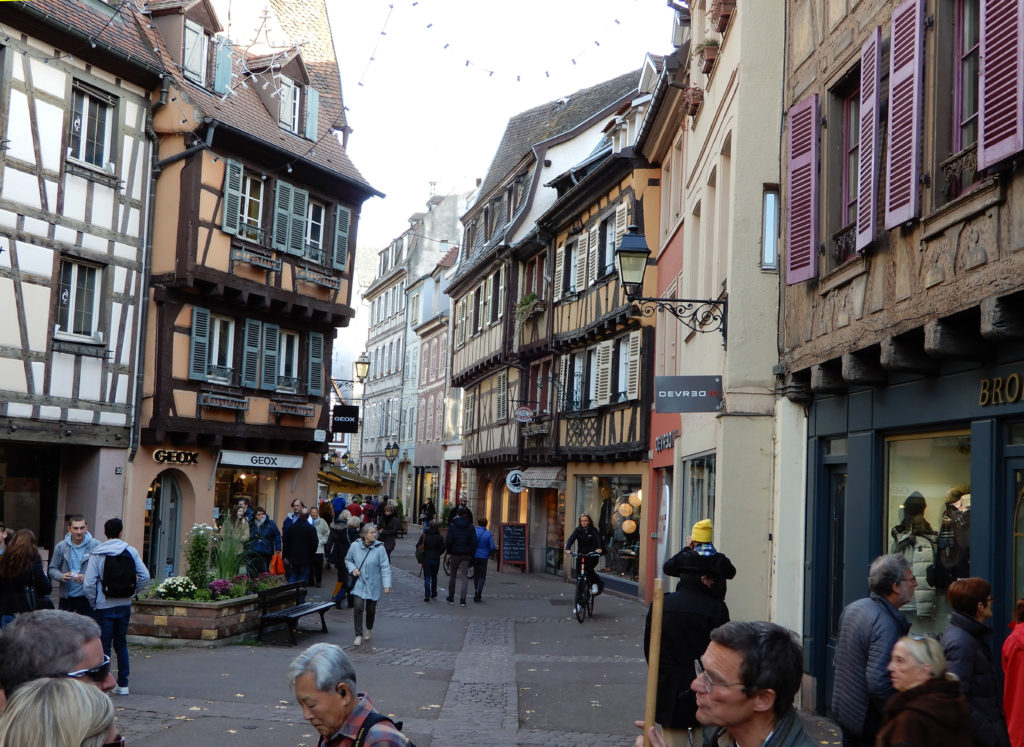
Puttering around Colmar feels like being transported back in time to a small sleepy French village in the countryside. The old town has cobblestone streets lined with half-timbered buildings. Half timbering refers to a construction method where the structural frame is exposed on the exterior of the building. Many of the streets are closed to cars. Lining the streets are many small shops, and a high percentage of these are boulangeries showing off piles of their freshest croissants, breads and pastries. Freshly baked goods and accompanying aromas are literally everywhere. It is hard for us to imagine where are all the folks who eat these treats, but we are not complaining!
Strolling down the narrow pedestrian streets it is easy to get lost in all of the sights, atmosphere and people. We walk around almost in a daze taking in the sights, sounds and smells. The town dates back to 823 AD and has a long and storied history of shifting between French and German control through the centuries. Many of the buildings today in the old town have historic plaques identifying them as dating to the 1300s.
Storks and the Alsace
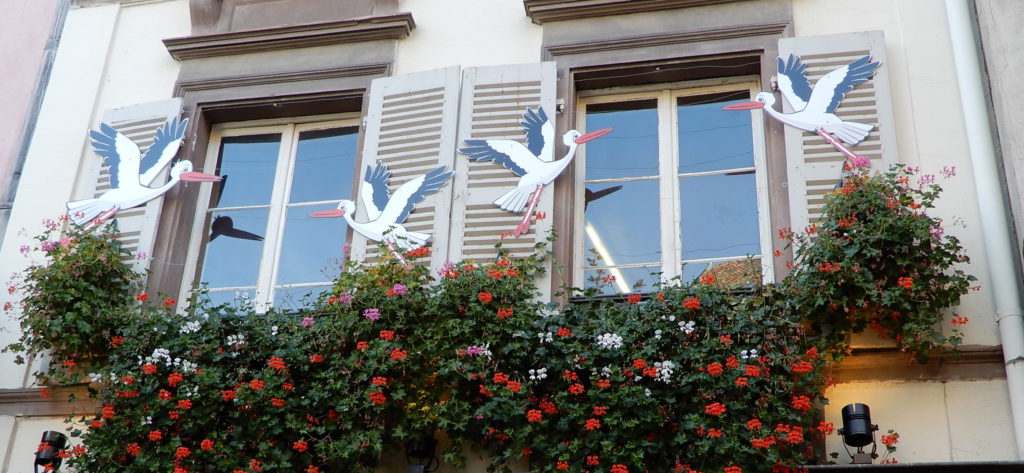
Our guide tells us the story of France and the Alsace’s beloved storks. Looking up, there are large nests that the storks inhabit during mating season. The nests are very large, some big enough to hold a small car. They are known to migrate to Africa during the cold winter months but always return to the same nest year after year. In the 1970’s they were near extinction in the region with just a few pairs, thanks to help from local organizations and people the stork population is making a comeback. Storks are a symbol of fertility and good fortune. This also explains why we have seen many stuffed toy storks in souvenir shops and paintings of storks on buildings and public art.
Heart of Colmar
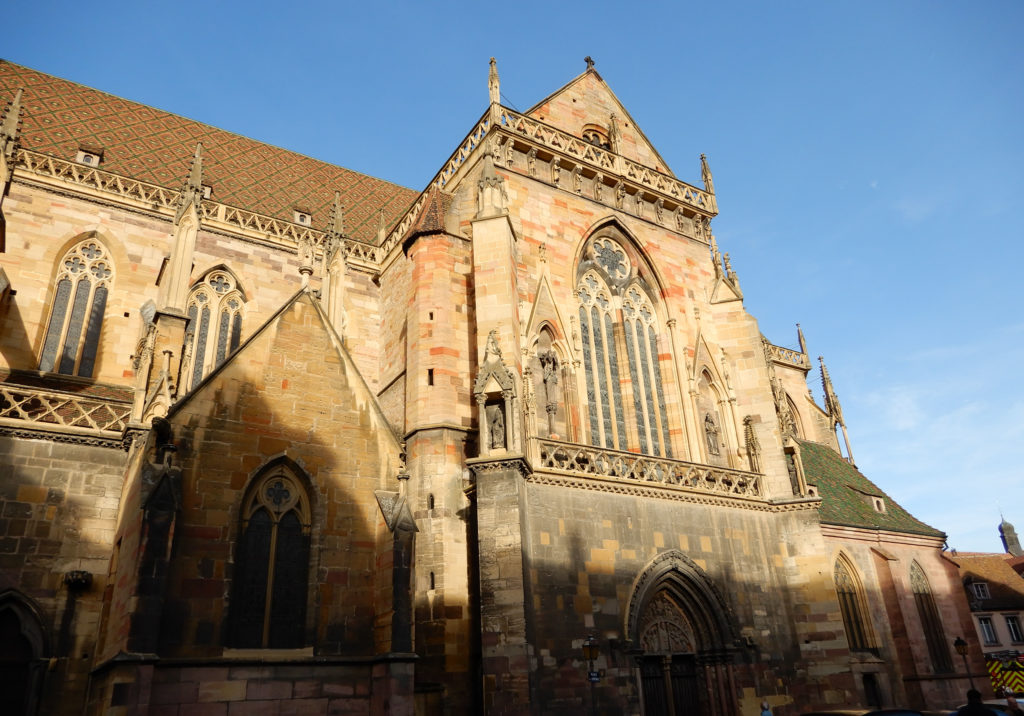
The centerpiece of Colmar is the 13th-century gothic Eglise Saint-Martin church built between 1234 and 1365 in Renaissance style. The church was built on the site of two prior churches built as early as 1000ad. The church rises high above the street more than 230 feet. We find it had to imagine how such a beautiful building could have been built so long ago without modern equipment. Our guide explains there are testaments on the exterior of the church referencing the troubled past of the Jews in Alsace.
Architectural Renaissance
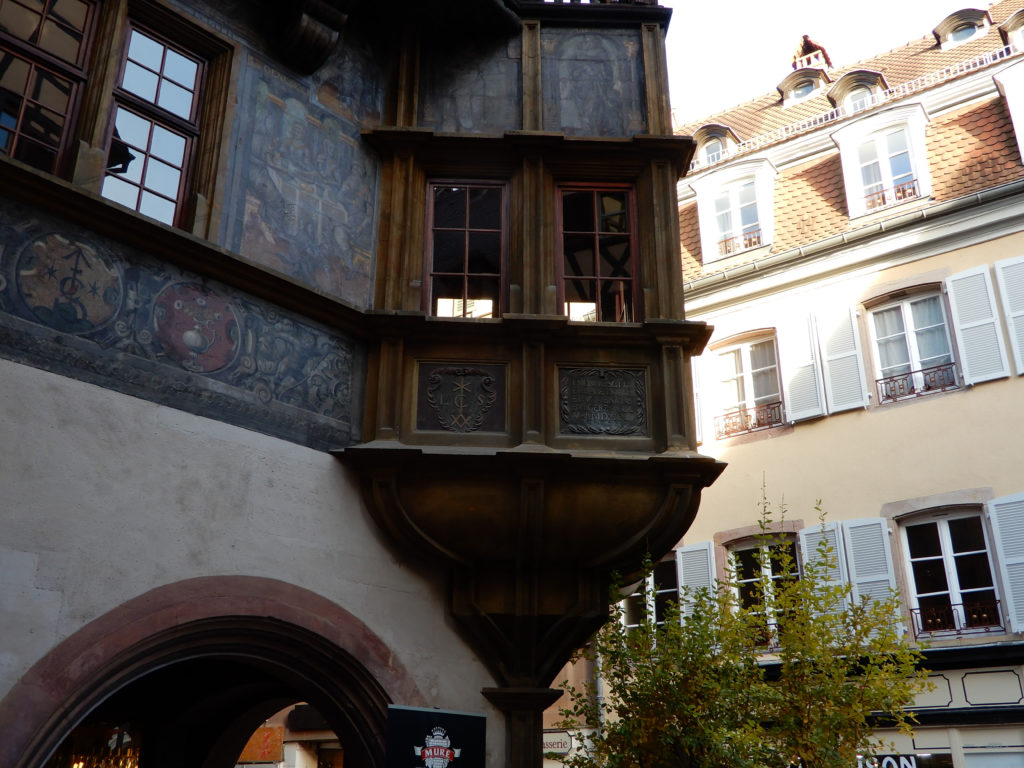
We continue through the old town passing more interesting buildings. Our guide stops to explain some of the early history. One historical landmark we saw was the Maison Pfister house considered the finest in Colmar. The house is named for Mr. F. Pfister who occupied it during the late 1800s. Originally, it was built in 1537 for Ludwig Scherer, a wealthy hatter. The house has medieval features, but is renowned for being the first building in Colmar’s architectural renaissance.On the second floor corner of the house is a wooden gallery extension that allowed Scherer to watch over all of the comings and goings of the town.
Justice, Labor and the Fatherland
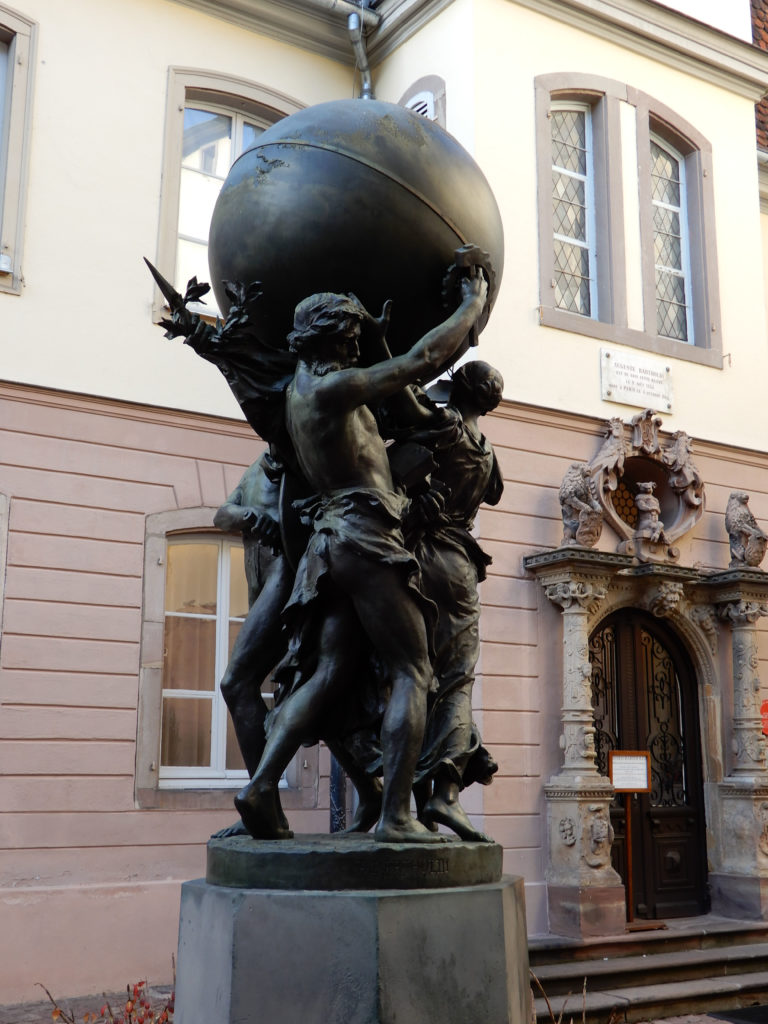
Then we past the Auguste Bartholdi museum honoring the Statue of Liberty sculpture. The museum is located in what was formerly Bartholdi’s home. In the courtyard is a statue Bartholdi sculpted in 1902, “The Great Supporters of the World”. In the courtyard is a statue Bartholdi sculpted in 1902, It is a bronze group depicting the allegories of Justice, Labor and the Fatherland supporting the world.
Marche Couvert
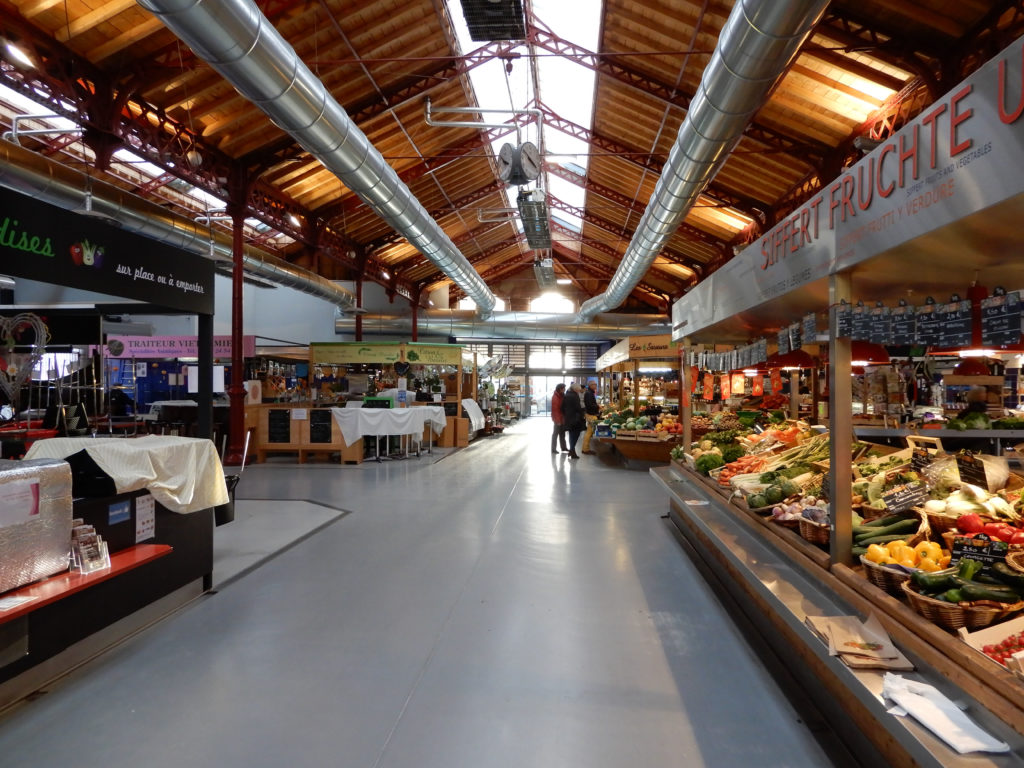
Our guide turns us loose to explore Colmar on our own. We wander and find a large public market, the Marche Couvert. The produce and food displays seem to be endless. The facility is immaculate. A large sign reads “Siffert Fruchte Und Gemuse” which translates to “Siffert Fruits and Vegetables”. There are also other merchants selling wines from the region and one stand offering “Foie Gras d’Alsace & Specialties De Volaille” or loosely translated, ‘duck liver and other poultry specialties’.
Exploring Colmar
We stroll alongside a stream heading back to the meeting point with our group, but don’t make it far before we are overcome with impulse passing one of the many boulangeries. We find ourselves sitting on a bench savoring the most amazing warm, flaky, buttery croissants. Ahhh, sitting on a bench, eating a croissant, in a small idyllic French town, we ask ourselves, does it get better than this?
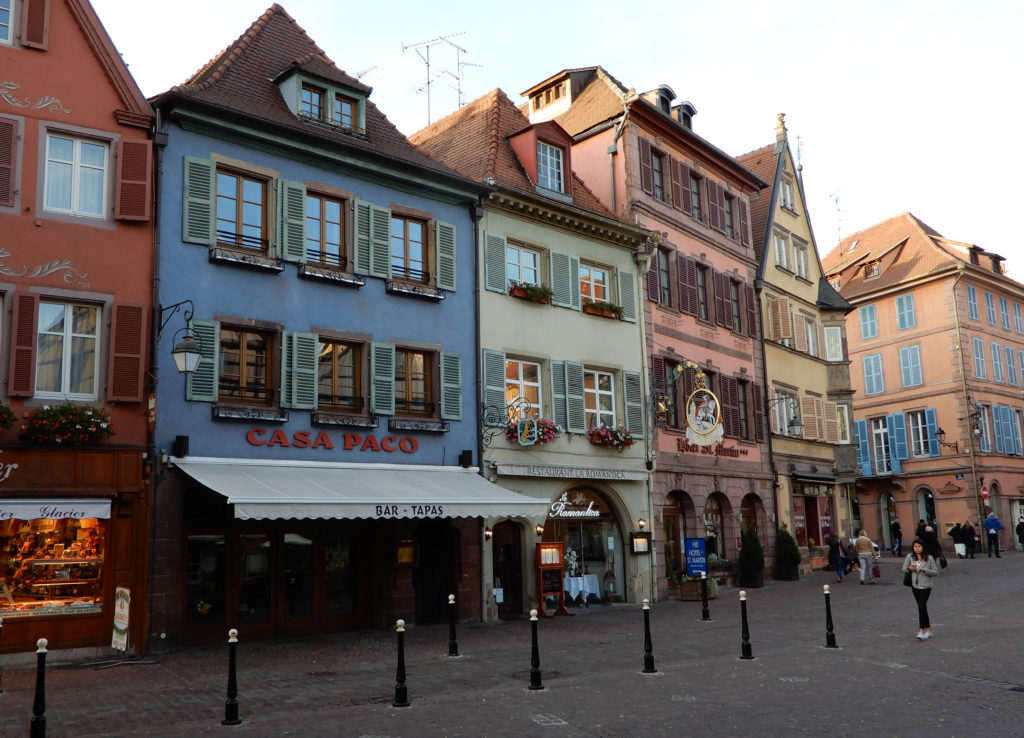
We meet up with the rest of our group at a large public square next to the museum Musee Unterlinden. This area also appears to be a budding foodie district. Unlike the traditional French restaurants in the heart of the old town, here one can chose among French, Chinese, Italian, German, a Tapas Bar, and the Republic of Kebabs.
Boarding our bus, we have a restful drive back to our ship arriving at sunset. The crew greets us with warm cider when we arrive.
Go to Rhine River Cruise post here.

